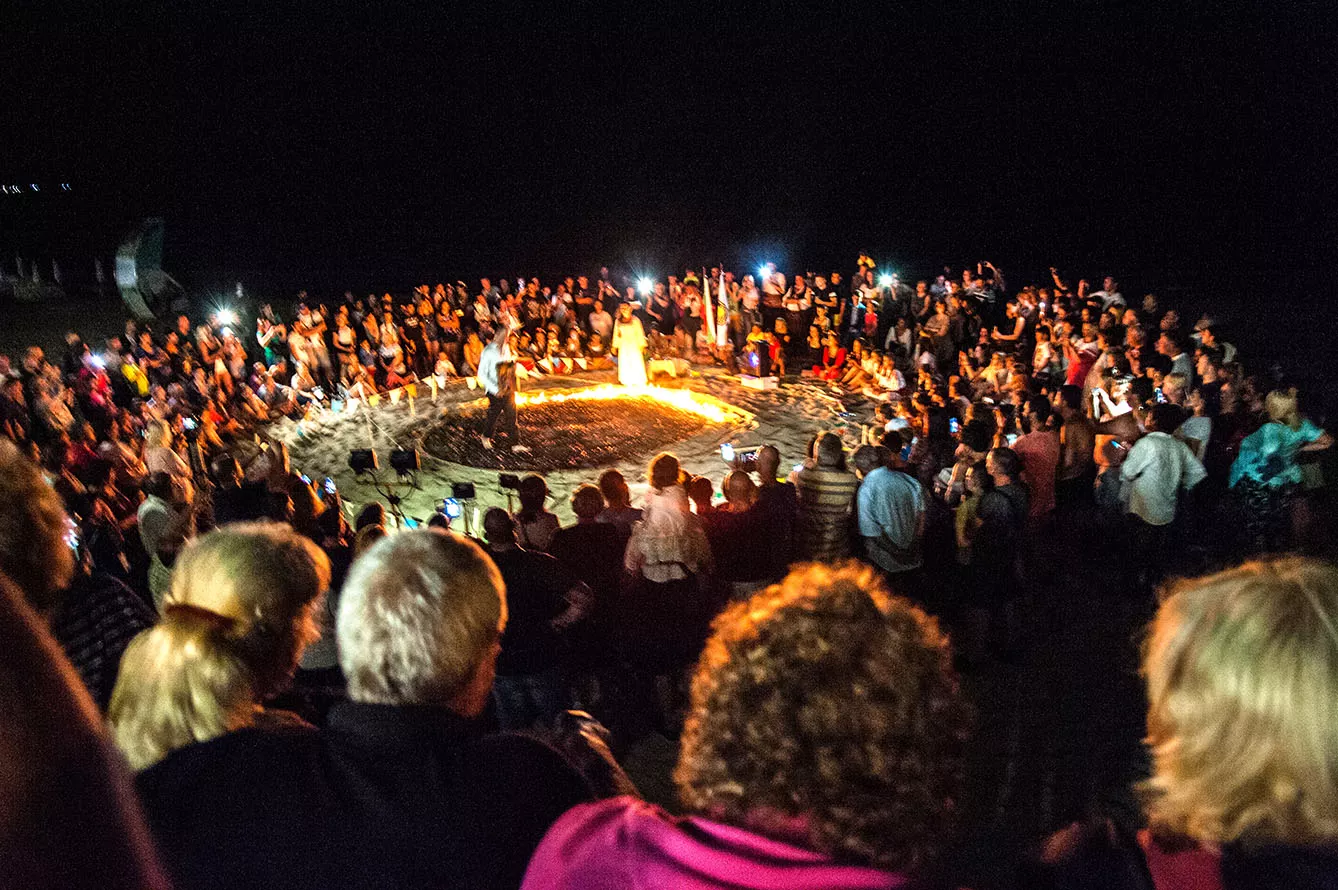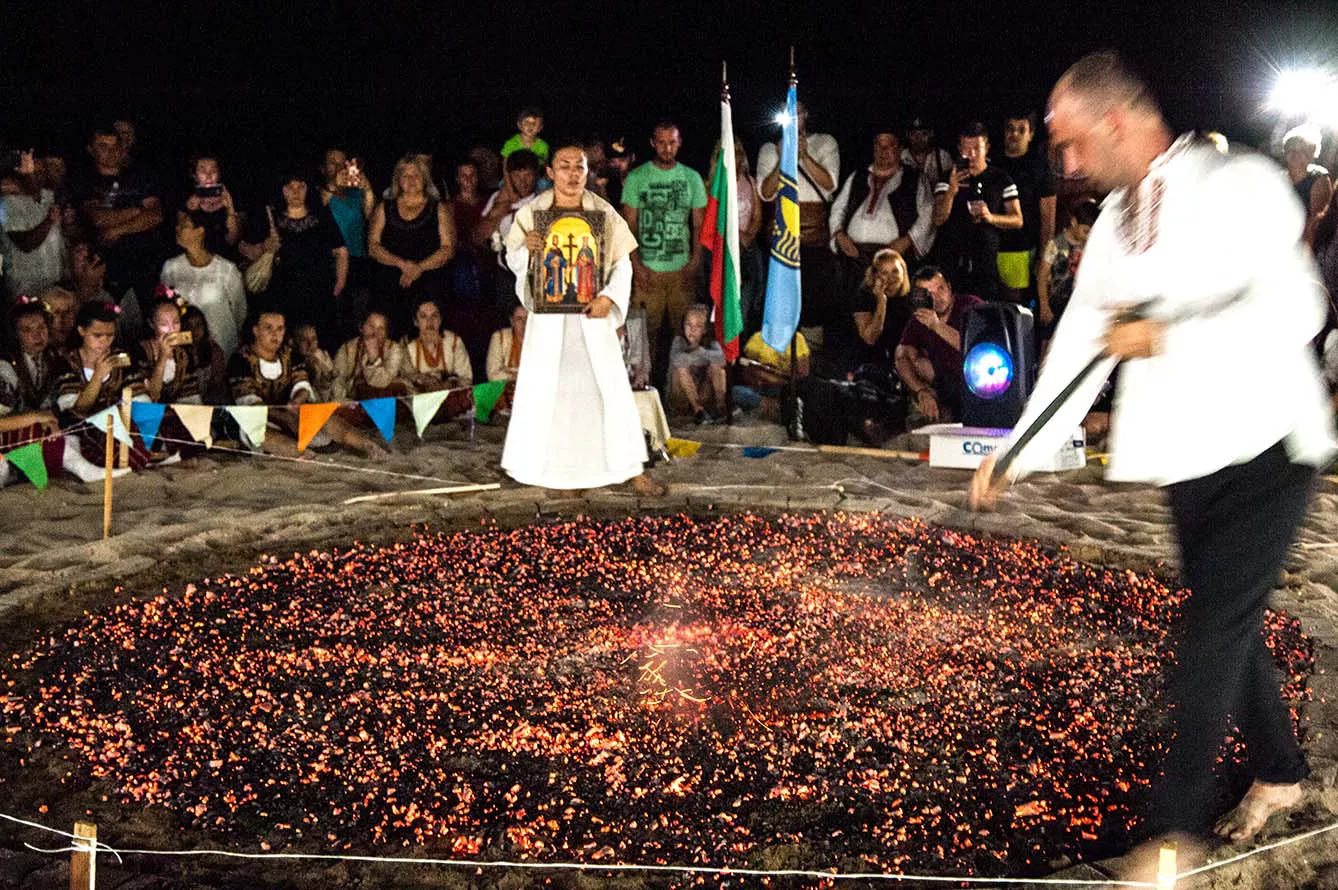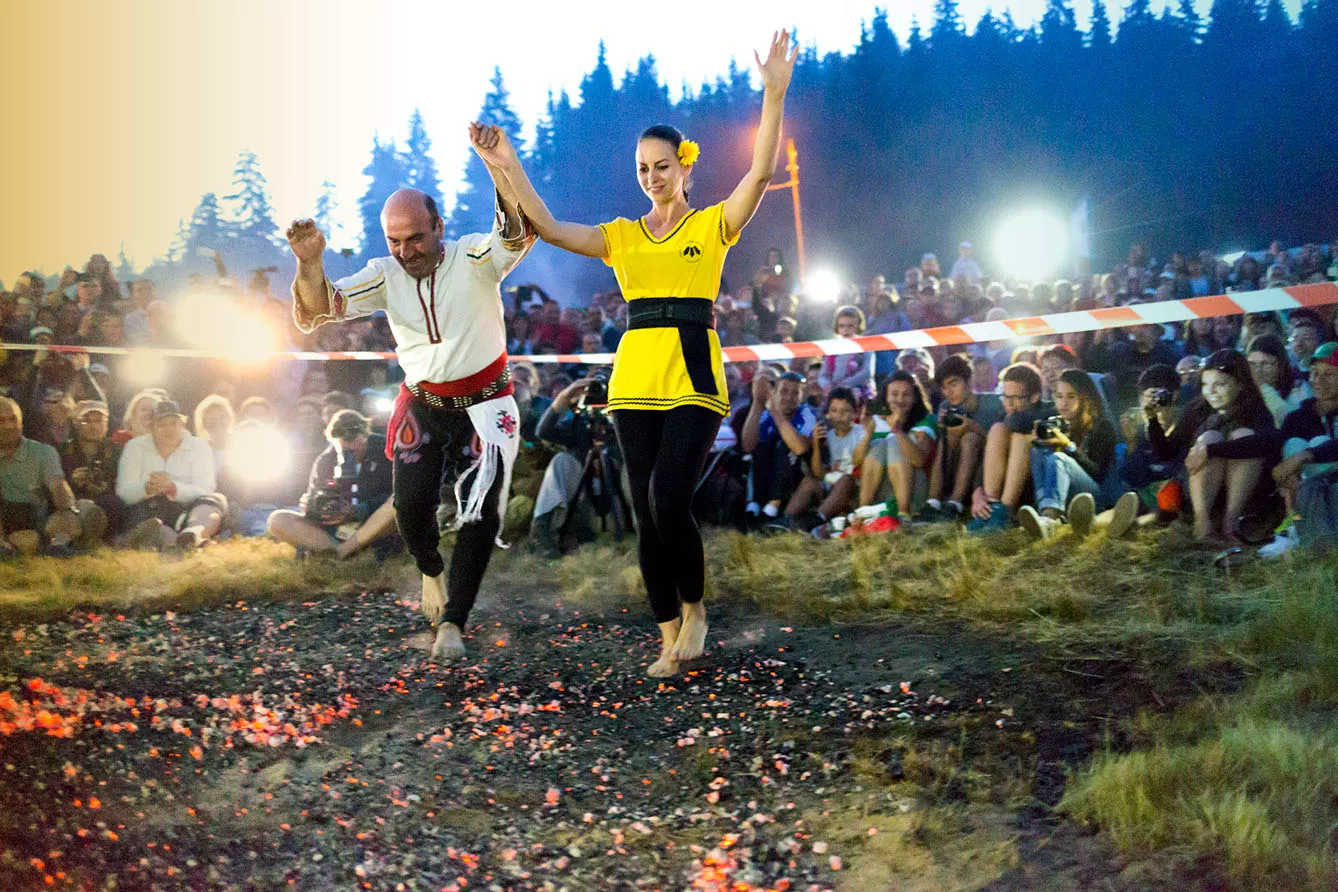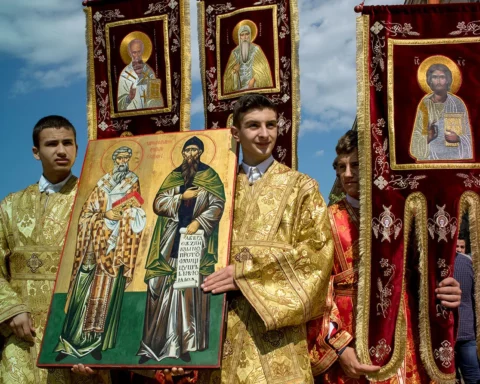The fire dance is exactly as it sounds. Nestinari, as they are called, dance on hot embers, practicing an ancient tradition still shrouded in mystery. Some scholars associate the emergence of the dance with celebrations in honor of Dionysus, the god of fertility in ancient Greek mythology, while others link it to the Thracian cult of the sun.
Practiced in the border territory where Bulgaria and Greece meet, at the beginning of the 20th century, fire dancing was shunned by secular and religious authorities in Bulgaria. During the socialist regime, the practice was banned altogether, but across the border, in northern Greece, it was kept alive, largely by descendants of Bulgarian refugees. In 2009, the mystic ritual earned a spot on the UNESCO List of Intangible Cultural Heritage.
At 63 years old, choreographer Miho Atanasov has been part of the nestinar community of performers, together with his sister, for 45 years. “At first, I imitated a colleague of mine who is no longer among the living. Then you get passionate about it. I said to myself: if the old nestinars can do it, why can’t I? I grew up in an area with a rich ethnography. It was in the fire that I felt the desire to learn the details of the fire dance. I used to watch the old dancers, who were perfect. And this custom is typical for our country, our Strandzha Mountain. This is what connects me to the dance on the embers,” Atanasov tells 3Seas Europe.
At the center of the flaming circle
The village of Balgari has been at the center of fire dancing in Bulgaria for many years, with up to 6,000 people participating in the three-day festivities in honor of Saints Constantine and Helena, beginning on May 21. The word “anastenaria” is Greek, meaning sighing or panting, something associated with the dancers’ behavior while walking and dancing on the embers.


Despite the obvious risk of burns, including the threat of the traditional clothing catching on fire, medical examinations usually find that while the skin on the dancers’ feet may remain tender after a dance, it bears no visible burn marks. Community members also like to say that if a dancer accidentally slips and falls into the ring of fire, they remain unharmed. They see this mainly as a gift from the saints.
“Years ago, I had an accident,” Miho Atanasov tells us. “I was dancing with a child on my shoulders. The terrain was not well leveled, and I fell on my hands. Thank God the little one was not hurt. The audience gasped. There have been times when I felt I wasn’t ready to step into the fire. I’m only human. But I have overcome myself. One should always believe in himself.”
Nestinari: A ritual steeped in tradition
How does the ritual itself go? On the day of the celebration in the village of Balgari, young people carry their icons to the nearest spring. They are followed by a procession. The icons are then consecrated. Participants dance the choro, a traditional Bulgarian dance, to the sound of bagpipes and drums.
Meanwhile, a big fire is lit in the square, maintained throughout the day by the oldest nestinar, a man or a woman who no longer dances. The culmination comes in the evening when the dancers enter the fire circle. They pass through the embers three times and then cross themselves. They utter cries, hold icons high over their heads, and make predictions.
The dance over the fire is also defined as a prayer to heaven for fertility and protection from disease. For the dance to be successful, spiritual preparation, cold feet, and the monotonous music of drums and bagpipes are important.
Falling into a trance-like state
The ecstatic state into which the dancers fall is called interception. In this state, they lose contact with the outside world completely, basically falling into a trance. Gradually this state is transmitted to the other participants. This gives the impression of some supernatural power. Academician Mikhail Arnaudov considered the first researcher of the tradition in Bulgaria, defines the dancers’ “capacity for religious exaltation” as their distinctive feature.
Prof. Angel Krastev, a retired historian from The Constantine of Preslav University of Shumen, tells 3Seas Europe that “the Orthodox Church does not accept the tradition. But it is undoubtedly an attraction, especially for foreigners.” Is it a uniquely Bulgarian tradition? Well, it depends. “In fact, similar rituals have been known in some pagan nations, China and Japan, and in some Arab tribes in Algeria and Morocco. Fire-walking is said to still be practiced by shamans in Asia Minor, Africa, America, and some islands in the Pacific,” Hieromonk Vissarion Zografski and Hieromonk Yoan Filippov from the Zograf Monastery in Mount Athos, Greece observed in their study “Superstitions among Christians today.”
Miho Atanasov, a fire dancer with almost five decades of experience under his belt, believes the tradition is not going away. “There are young people who want to learn the tradition. My sister started very young and already has grandchildren. Already there are, of course, other young people who want to learn the intricacies. They are just catching fire. It’s a way of life.”







